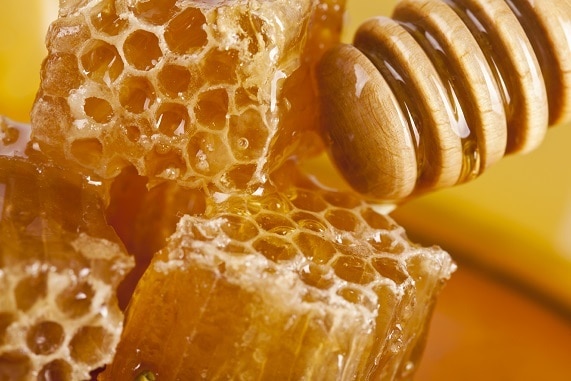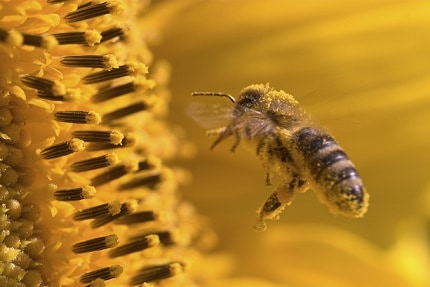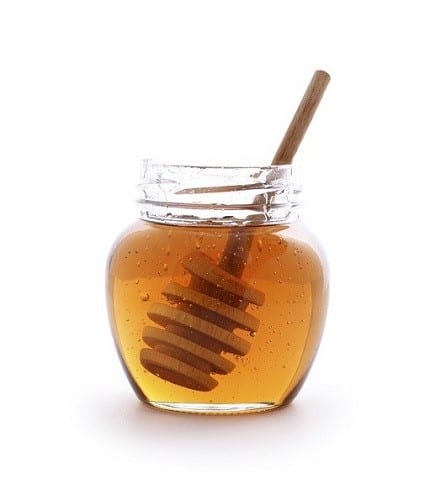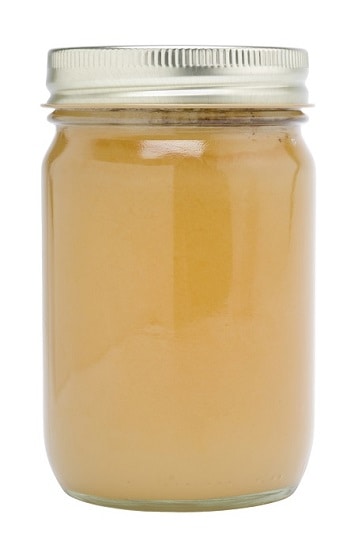 Before we discuss honey and whether it’s great for your skin, you first need to know about the gigantic industry of natural topical treatments. The business sprang up when vast swathes of acne patients realised that commercial face washes weren’t helping them, and decided to look for alternative remedies.
Before we discuss honey and whether it’s great for your skin, you first need to know about the gigantic industry of natural topical treatments. The business sprang up when vast swathes of acne patients realised that commercial face washes weren’t helping them, and decided to look for alternative remedies.
Businessmen everywhere took notice and suddenly all sorts of wacky products burst onto the market. You can wash your face with apple cider vinegar, jojoba oil, baking soda, shea butter, lemon juice and many obscure plants that apparently work much better simply because they are natural.
Most of these products do not work. This industry has a very high volume of scams. In many cases, the products were created simply to take advantage of the interest in natural products; in other words, they’re there to make a quick buck and not to improve your skin.
Their business model doesn’t rely on being effective, it relies on jumping on a bandwagon. A classic example is apple cider vinegar. This has been touted as a miracle cure to acne as well as other illnesses, but not only does it fail to improve your skin, it can actually make acne worse by irritating and burning it.
Countless people are falling for these products and wasting their money – don’t let the same happen to you! Just because a product is natural does not mean it’s automatically better. It might be free from harmful manmade additives, but nature has its own substances that can cause harm, as apple cider vinegar shows us.
How on earth does this relate to honey?
Because while the vast majority of natural products don’t work, honey is an excellent exception. It is completely natural and it actually works too.
Honey has been used for thousands of years to treat all sorts of ailments, and unlike other treatments it actually has science behind it. In fact, honey is one of the best acne treatments full stop; it is anti-inflammatory, doesn’t irritate the skin, and is one of the most powerful antibacterial substances on earth.
At the end of the day, acne is a disease caused by diet and lifestyle rather than poor hygiene. But topical treatments are great for a boost, and what’s more, search the internet and you’ll find many acne patients proclaiming honey to be a miracle.
Read on, and find out why honey rises above most other natural treatments…
Honey is highly anti-bacterial
If you’ve read this article then you’ll know that bacteria is a big cause of acne. It’s not the biggest, but it is pretty significant and without the dreaded p.acnes bacteria your spots would not become as big and swollen. Honey helps the skin by being one of the most antibacterial foods in the world. Honey has been demonstrated again and again to kill almost every type of bacteria it is applied to.
In this study scientists gathered 26 different types of honey from New Zealand, and applied several samples of each one to wounds. They found that while the antibacterial power varied widely, every type of honey killed the bacteria to some degree. After twenty four hours the reduction in bacteria ranged from 4% to 60%.
Read Annihilate Your Acne – learn how to clear your skin permanently
Then in another study, scientists applied manuka honey to the eyelids of patients with a tear deficiency. They found that 24 hours later, the bacteria that caused the problem had been reduced substantially.
This is just the tip of the iceberg; there are so many other studies. It is now an accepted medical fact that honey is antibacterial.
What is not known is whether honey can specifically reduce the acne bacteria, p. acnes. Fortunately we can easily deduce that it can by looking at other studies. In 2005 a team of scientists applied honey to 13 different bacteria; the result was that 12 of them were reduced. There are no specific tests on acne bacteria but if honey inhibits so many other types of bacteria, it is fair to assume that it does the same to p. acnes.
It’s backed up by real world evidence too; many people report that honey doesn’t eliminate their acne, but reduces the redness and swelling associated with bacteria very effectively.
So what does this mean for your acne? It means that if you apply honey to your skin, the p. acnes bacteria gets destroyed, there is no huge inflammatory response to it, and your pores don’t swell up and become a pimple. This is also why tea tree oil and blue light devices kill acne so well.
How honey kills bacteria
 We haven’t identified every single compound in honey and we probably never will; therefore we can’t list every antibacterial substance within it. However there are three known compounds which have a significant effect.
We haven’t identified every single compound in honey and we probably never will; therefore we can’t list every antibacterial substance within it. However there are three known compounds which have a significant effect.
Hydrogen peroxide – if you’re familiar with benzoyl peroxide, you’ll know that it works by destroying bacteria. The problem is that it has bad side effects too. Hydrogen peroxide is basically a version that kills bacteria just as well but causes less problems at the same time. Honey is known to form hydrogen peroxide when you put it on the skin and this is responsible for a significant part of its antibacterial activity.
Some might be worried about this, given that hydrogen peroxide does still have minor side effects, but side effects from honey are rarely reported. It’s possible that one of the countless other substances in honey helps to counteract any problems, without preventing the benefits.
Recommended – 6 vitamins and minerals which could finally clear your acne
Methylgyloxal – it’s not known how this substance kills bacteria; all that’s known is that it does so very effectively. Methylgyloxal is so famous for killing bacteria that in New Zealand, honeys are judged by their content of it and assigned a score. This is called the MGO rating and it is widely used by consumers to judge how healthy the honey is.
Manuka honey is particularly well known for its Methylgyloxal content; in some samples it contains 44 times more than Revamil, a widely used medicinal honey.
Bee defensin-1 – this is a protein that has only recently been identified. Bee defensin-1 is a peptide made in the bee’s immune system. Normally they use it in their bodies to fight bacteria, but bees actually add it to honey as they create it.
Nobody knew it was in honey until 2010 and nobody knew it was antibacterial either. Scientists were puzzled to find that once the hydrogen peroxide and Methylgyloxal was eliminated from honey, it still had antibacterial effects. They conducted more experiments and discovered that honey had large amounts of bee defensin-1 and it was this that was responsible for the continued benefits.
Unidentified substances – these three substances may just be the tip of the iceberg. In one study scientists did an experiment where they neutralised the Methylgyloxal, the hydrogen peroxide, and the bee defensin-1, and they still found that honey was antibacterial.
It’s highly possible that as with bee defensin-1 recently, these substances will be identified in the future. For now though, we know that honey is an extremely powerful antibacterial weapon.
Honey has many more benefits
I could recommend honey thanks to its antibacterial benefits alone, but honey also contains numerous antioxidants. Applying antioxidants to the skin is an excellent way to prevent acne as the squalene gets prevented from oxidising. Squalene oxidation is one of the two biggest causes of acne, as you can read here.
Honey has long been known to be rich in antioxidants. It gets an ORAC score of 270, which is pretty good for a food that most people treat as a sugar alternative…
…but it’s even better when you consider the fact that the honey analysed was almost certainly pasteurised. Most honey on the market is pasteurised and it’s unlikely that the testers would happen to have some raw honey. Heating (pasteurisation) decimates the antioxidants, so we can assume that raw honey contains far more than the pasteurised variety.
You also need to consider the fact that you’re applying the honey directly to the face. If you ate some berries with an ORAC score of 3000, then the antioxidants would be distributed all over your body. Some would get to your face, but only a fraction of the total.
7 natural topical treatments which can massively reduce acne
If, on the other hand, you apply antioxidants directly to the face, then almost all of them will work their magic there. Therefore despite the fact that honey’s ORAC score is not particularly high, you get just as much benefit from applying it to your face as you get from eating some strawberries, which have an ORAC score of about 4300.
Honey has also been credited with containing many trace nutrients. It does contain some vitamin C, magnesium, potassium, and others, but the amounts are far too tiny to have any effect. For example, 20 grams of honey contains just 0.1 mg of vitamin C, whereas the daily allowance is 60mg. Unlike the highly effective grapeseed oil, there’s little vitamin E either.
However this isn’t a problem, just a lack of a benefit, and honey has so many other advantages that there’s no need to worry about this.
So is honey recommended?
The answer is a resounding yes. Honey is one of the very best natural products that is widely available. Use the search button and you’ll find countless stories of honey reducing acne.
It’s also been widely used throughout history; its benefits were so widely known that it was mentioned in both the Bible and the Koran. Numerous civilisations such as the Ancient Egyptians and Greeks made use of honey, and the famous physician Aristotle said that it was good for sore eyes and wounds. Aristotle lived from 384-322 BC. None of this proves that honey helps acne, but when you consider all the scientific evidence we have gathered, the case in favour becomes pretty overwhelming.
Where honey really stands out is in its antibacterial powers. For example, aloe vera is another great topical acne treatment, but it’s best at lowering inflammation levels. Grapeseed oil, meanwhile, is great for vitamin E and linoleic acid. Honey has its own unique power.
How to use honey
 The best use for honey is to apply it to a particularly red and inflamed spot. Too much bacteria causes a spot to become this way; therefore the antibacterial properties of honey are a good way to “calm it down”.
The best use for honey is to apply it to a particularly red and inflamed spot. Too much bacteria causes a spot to become this way; therefore the antibacterial properties of honey are a good way to “calm it down”.
You could also apply honey to your whole face. This would prevent any bacteria from forming in the first place. Or you could apply it to numerous specific spots.
Read this article on royal jelly for another bee-derived acne clearer
The important thing is that you don’t remove honey quickly; you have to leave it for several hours to get the full benefits. Some honeys work faster than others, but none will have great effects in less than two hours. The graph in this study clearly shows that two hours is less effective than 24 hours. The best solution is to leave the honey on your skin while you sleep. Therefore you won’t have to worry about 1) looking ridiculous with honey on your face, or 2) accidently removing it by touching your face.
Additionally, there are almost endless varieties of honey. The most famous are Manuka honey and Revamil, but there’s a massive amount of others, including buckwheat, vipers bugloss, kanuka, ling, and thousands of local honeys produced worldwide.
Fortunately almost all of them have some antibacterial power. We already discussed this study here where scientists examined 26 different honeys. It showed that every single type had at least some antibacterial ability; therefore you will do well whichever you buy.
Raw vs pasteurised
However, it is VITAL that you buy the raw version. Pasteurising honey destroys many of the compounds which make it so great; the antioxidants are reduced, as are many of the delicate enzymes. For example, take a look at this picture of pasteurised honey…
As you can see, pasteurised honey looks like your average golden syrup from the grocery store. It is very transparent and clear looking. It has a freakish perfection about it that tells you that something must be wrong…
Here is some raw honey.
The raw honey is far “cloudier” and this indicates the presence of far more complicated substances. It retains all the goodness that made it great for your skin in the first place.
Overall you should never bother with pasteurised honey. Pasteurised honey is basically “dead” honey; it is so altered from its natural state that it’s barely honey at all. It’s so useless that it would have barely any effect on your skin and buying it would be a waste of money. Fortunately many people are aware of this; therefore raw honey is quite easy to find cheaply.
Manuka honey vs Revamil
These two honeys are the most commonly used ones. They are both medical grade honeys, which means that they have particularly high amounts of beneficial substances. However the two do differ quite a bit, particularly in their antibacterial activity. Manuka honey contains 44 times more Methylgyloxal than Revamil, but on the other hand, Revamil contains significantly more bee defensin-1 (according to this study).
Therefore while they are different, their effects on acne are likely very similar.
However, the classic rule still applies that either of them could have substances we don’t know about. One could actually be better than the other and the only way to find this out is to try it for yourself. You could do an experiment where you try Revamil on your pimples one night, and then try Manuka on a similar spot the next.
Repeat the experiment again and again and you might make a scientific discovery for yourself.
PS: if you’re getting manuka honey, make sure that you check the MGO scale, as this will tell you how much Methylgyloxal is in it. Also check the UMF (unique Manuka factor) rating. This is an indicator of the total power of the honey, rather than just the Methylgyloxal content.
A UMF score of above 10 is the gold standard and this allows honey producers to call it “highly active manuka”. So if you can’t find the rating, seeing “highly active manuka” on the jar is an indicator that it’s good stuff.
Are other honeys as effective?
Manuka and Revamil are commonly touted as the elite honeys, but many others are just as potent.
This study found that locally produced honeys were not as effective for some bacteria, but just as effective for others. They did find that Manuka was the best overall, but because the other honeys were just as effective for some bacteria, it is possible that they’re just as effective for p. acnes too.
Also, while the other honeys reduced the other bacteria by less, they were still highly effective. Therefore you will still get results with any other type of honey; using Manuka (or Revamil) is a bonus, rather than a necessity.
I’ve used several different types of raw honey but my recommend product is this Y.S. Eco Bee Farms Raw Honey (amazon link). If you want to use it as a sweetener then this honey tastes very rich as well, with a more classical honey flavour compared to other raw honeys I’ve tried.
Conclusion
Honey is a not a way to cure your acne. Always remember that acne fundamentally has to be treated from inside your body with diet and lifestyle changes.
But you can still make an excellent difference with it; applying honey to your face is a highly effective way to reduce big, red and swollen acne.
Honey is probably as effective as any commercial face wash, and it doesn’t have any harsh additives either. Two similarly effective natural acne killers are grapeseed oil and sea buckthorn oil. So if you ever read that natural or food based acne treatments are scams, that is largely correct, but never forget that there are a few elite products out there.
NEXT: forget creams and moisturisers – discover the ultimate acne-clearing diet
Thanks for reading!


Would you actually recommend leaving it on your entire face for 2 hours when washing it? Would it end up clogging your pores? I wanted to use it to wash my face but I read that keeping it there for 2 hours is what it takes.
Thanks
I recommend leaving honey on overnight actually. 2 hours of exposure won’t clog your pores worse than twenty minutes, because it’s all about the molecule size – not the time of exposure.
How does eating honey compare to applying it topically? Is it better to save it for topical treatment or is eating it just as effective?
It’ll fail, because the benefits are antibacterial. Some anti-inflammatory properties and antioxidants will migrate to your face when eaten, but that’s it. It’s a top quality natural sweetener though.
Is honey and cinnamon as a face mask a good mix?
IF you want two different features then yes – honey is antibacterial and anti-inflammatory whereas cinnamon can increase collagen formation and is also very rich in antioxidants. If you want to double down on honey’s antibacterial properties then combining honey with tamanu oil would be smarter.